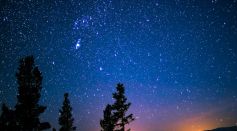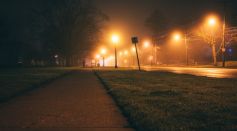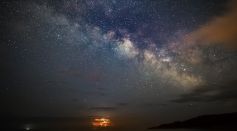Tags: Light pollution
Light Pollution Management: How a Small Japanese Town Maintains Its Dark Skies
Facing Noctalgia: The Pain of Losing the Night Sky to Light Pollution

Star Parties Help Amateur Astronomers Observe Light-Polluted Skies; What Exactly Are These Events?

Hawnby, First Dark Skies Village in England, Dims Lights To Counter Pollution and Enhance Night Sky Visibility, Stargazing

Light Pollution Makes Night Sky 10% Brighter Each Year; How Does ALAN Worsen This Problem?
Exposure to Artificial Light at Night "LAN" Linked to Heightened Diabetes Risk, Study Says

Nighttime Lights May Prolong Allergies and Researchers Explain How

Coastal Animals Lose Advantage To Camouflage Due To Artificial Light at Night, Study Claims

Park for Stargazing: International Dark-Sky Association Declares Waterton-Glacier International Peace Park as World's First Dark Sky Park
Satellite Light Pollution Is Worsening, Disrupting Naked-Eye Observers and Astronomers
Here's How City Lights Both Attract and Repel Migratory Birds
Streetlights, Not the Biggest Contributor to Light Pollution, Study Shows

Study Shows Light Pollution Increases Night Activity of Disease-Carrying Mosquitoes
The Moon and Stars Are a Compass for Nocturnal Animals – but Light Pollution Is Leading Them Astray
Experts Explain Why We Need to Flick the Switch On Light Pollution
Most Popular

Will Earth's Magnetic Poles Flip Next? Magnetic Pole Reversal Explained Through Cutting‑Edge Magnetosphere Science

How Lightning Science Reveals Why Charged Storms Are Rising with Global Warming Effects

Relativity Time Dilation Explained: The Physics of Time and Why It Moves Differently in Space

De-Extinction vs. Conservation Science: Which Approach Protects Biodiversity Most Effectively?




